Date: 10 January 2015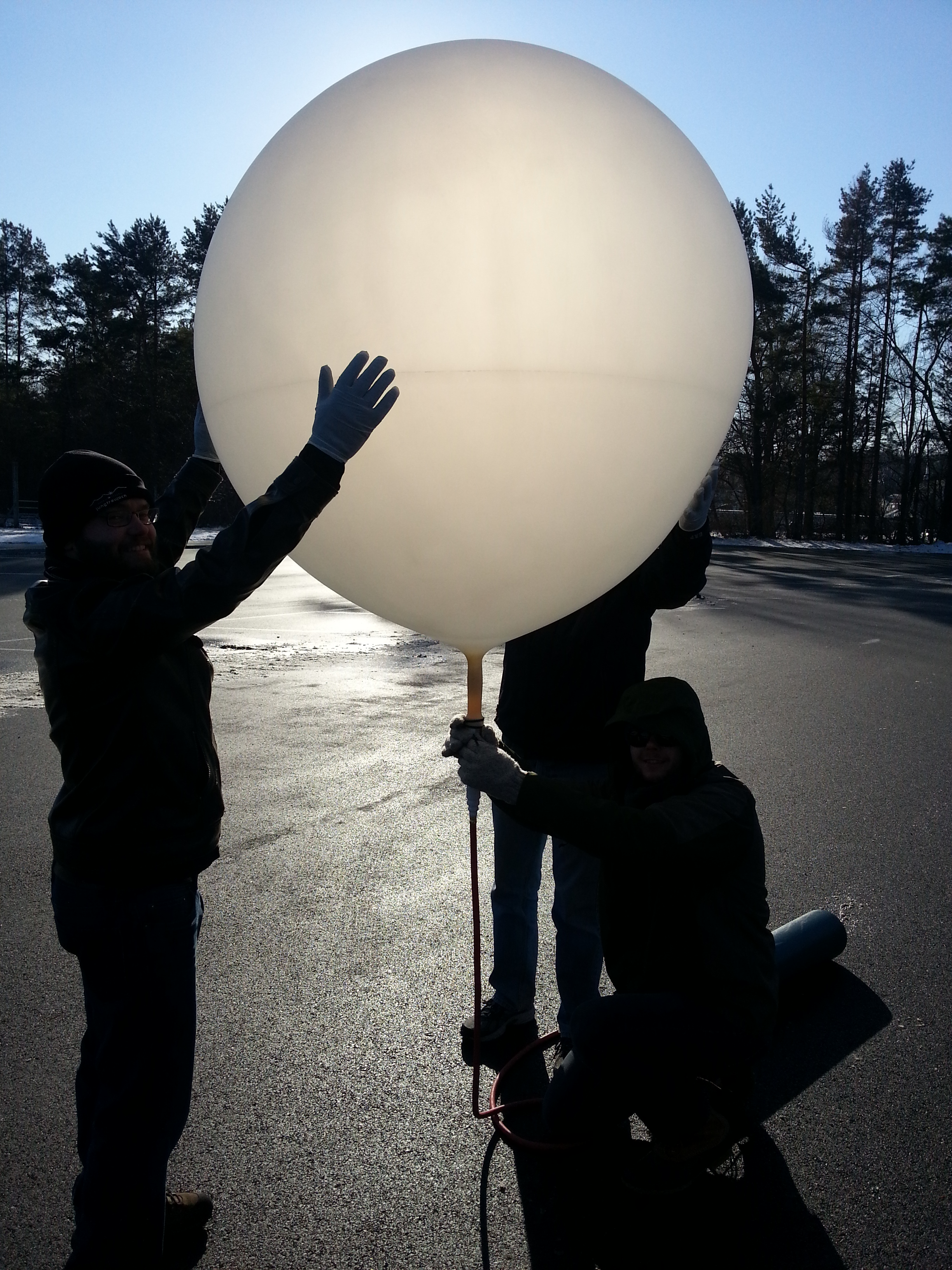 Equipment: DogeShip Rev 2 (aka DS-2)
Launch: Albany, NY
Landing: Nashua, NH (targeted), Bernardston, MA (actual) - [More on that “near miss" later]
Time of Flight: 84 minutes
Distance Traveled: 62 miles
Burst Altitude: TBD (~56,600 ft)
Payload Status: Still in a tree...
Equipment: DogeShip Rev 2 (aka DS-2)
Launch: Albany, NY
Landing: Nashua, NH (targeted), Bernardston, MA (actual) - [More on that “near miss" later]
Time of Flight: 84 minutes
Distance Traveled: 62 miles
Burst Altitude: TBD (~56,600 ft)
Payload Status: Still in a tree...
With one launch under our belts, but the hardware being several hundred miles out at sea, we were determined and eager to head back to the skies as soon as we could reasonably determine the root cause of the failure on EFT-1. After analyzing the Telemetry data, we were able to tweak the input parameters in our Python flight simulator model, and obtained our best educated guess as to demise of the ill-fated EFT-1.
Despite the bone-numbing, frigid conditions of our first launch back in November, here we were again packing the car at 7AM in balmy 3F conditions. After having driven out to Albany, NY the previous night to crash at a friend's apartment, the car was packed and we embarked for the launch site.
Launch Plan:
With a planned launch date of January 10th, the winds for the weekend necessitated a trip out to Albany, NY for an estimated recovery around Nashua, NH. Parametric studies were run for various configurations of nozzle lift (total lift minus the weight of the balloon), weight, and descent drag of the parachute to ensure that we would have all the information necessary on launch day to bound our predictions.

Mission Objectives
- Verify Test Readiness Review (TRR) and launch procedure effectiveness
- Verify Telemetry (TM) system utility and reliable recovery techniques
- Verify validity and assumptions in Python flight simulation using TM and Flight Data Recorder (FDR) data
- Verify utility of the common fill/mounting system
- Optional Objective: Record photographs during ascent and descent
Risks
In addition to much more rigorous flight planning, the highest risks for EFT-2 were assessed and ranked to maximize the probability of success.

Both the cell phone life at cold and cell phone coverage at the landing zone were the highest impact risks, since either occurrence would likely mean we would not be able to find and recover EFT-2. Lesser risks included flight sim model inaccuracies resulting in an uncertain landing location, and the very high probability that EFT-2 would land in a tree and could be found but not easily recovered.

Telemetry
Similar to EFT-1, the Telemetry (TM) phone would act as a Flight Data Recorder (FDR) in-flight by recording accelerator data, temperature, GPS, and much more for us to analyze. In terms of recovery, the phone would send us an SMS text message once back on the ground in order to locate the payload for recovery.
Launch Execution:
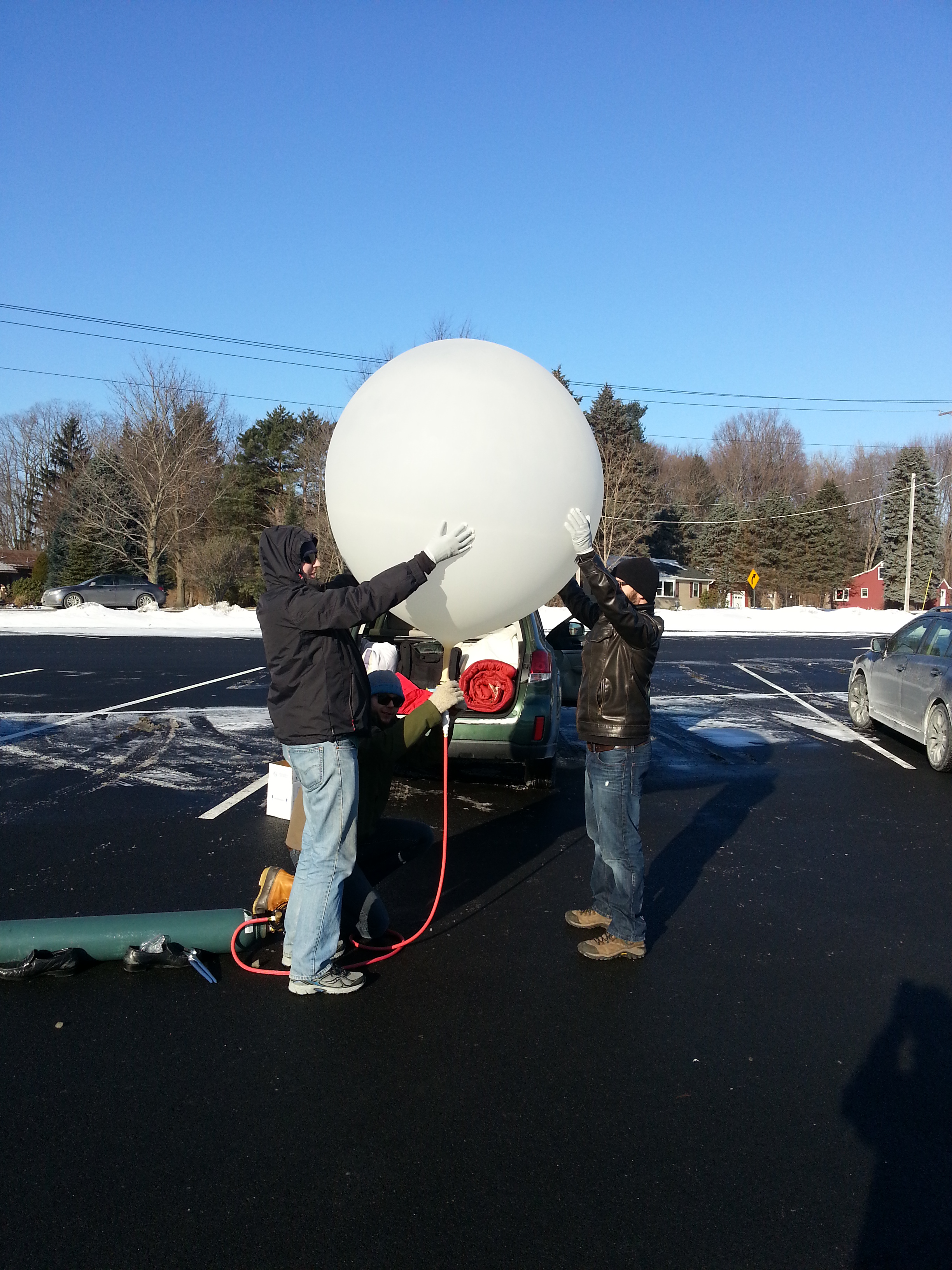 After final pre-flight checks the night before (OK, maybe it was 2AM the morning of...), the launch-site selected was at a school just south of Albany, NY, ensuring that we were outside of controlled airspace and not in line with any of Albany’s runways.
After final pre-flight checks the night before (OK, maybe it was 2AM the morning of...), the launch-site selected was at a school just south of Albany, NY, ensuring that we were outside of controlled airspace and not in line with any of Albany’s runways.
A team of five people were present to help out, which proved invaluable since the temperature was a frigid 10F at launch, and the extra help allowed us turns to swap out and warm our hands.

The QuikFill inflation system worked wonders! A quick attach/detach allowed for periodic nozzle lift checks, and the direct attachment to the CGA-580 valve on the helium tank meant there was no chance of any Helium leaking during the fill.
After preparing the payload, enabling the TM phone, and completing the filling of the balloon, the initial launch parameters were recorded and EFT-2 was determined a GO!
| Parameter |
Value |
Units |
| Final Payload Weight |
1.5 |
Lbs. |
| Measured Nozzle Lift |
7.2 |
Lbs. |
| Free lift (Nozzle lift – payload weight) |
5.6 |
Lbs. |
| Estimated Burst Altitude
(GPS data not yet retrieved) |
56,600 |
ft |
Launch Log:
0 minutes – and she’s away! Godspeed, EFT-2.
https://www.youtube.com/watch?v=K6OI5Xx3cDM
2 minutes - with the balloon climb rate seeming to be on target, the first few minutes of the launch seemed to bode well for EFT-2.
3 minutes - communications unexpectedly cease.
Noticing how the temperature had been slowly creeping up over time from 25C all the way to 50C at our last telemetry response, a sinking feeling developed in our stomachs (and yes, we did in fact just switch to SI units...much more useful when doing anything except describing the temperature outside!). Pre-flight testing with the TM phone indicated that it would shut-down due to overheating somewhere around 56C. Is it possible that the phone shut-down and EFT-2 would suffer the same un-recoverable fate as EFT-1? Only time will tell.
60 minutes - still not a single comms message has been received since 3 minutes. Powered off a mix of caffeine and adrenaline, we frantically continue monitoring for any sign of the Dogeship, but concerns continue to grow that the phone shut-down due to over-temp and that there will be no way to find it once she lands.
75 minutes - if the balloon burst as expected and the flight simulator was accurate, EFT-2 should be landing at any moment. Every agonizing minute that goes by suggests more and more that we won’t be hearing again…

84 minutes - CONTACT! SMS messages with GPS coordinates have been received, and EFT-2 is on the ground in Bernardston, MA (Zip code 01337 – yes, 1337). Re-route the car GPS and off we go to shoot up Rt. 91 from the Mass Pike.
90 minutes - only miles away from EFT-2, a major accident on the highway has traffic backed up for miles, and we’re caught right in the middle of it. Excited yet frustrated that we aren’t moving faster, we press on.
120 minutes – we arrive at the site, and spot something orange from the road. It’s a decent way in on someone’s property. Knocking on their door, we obtained permission to take a closer look and headed out to find EFT-2.
Unfortunately, EFT-2 will not be recovered today (or any time soon). She’s 80+ft. up in one of the tallest trees amidst branches. Stay tuned for updates on the recovery efforts thus far and the one planned that will hopefully bring her down.
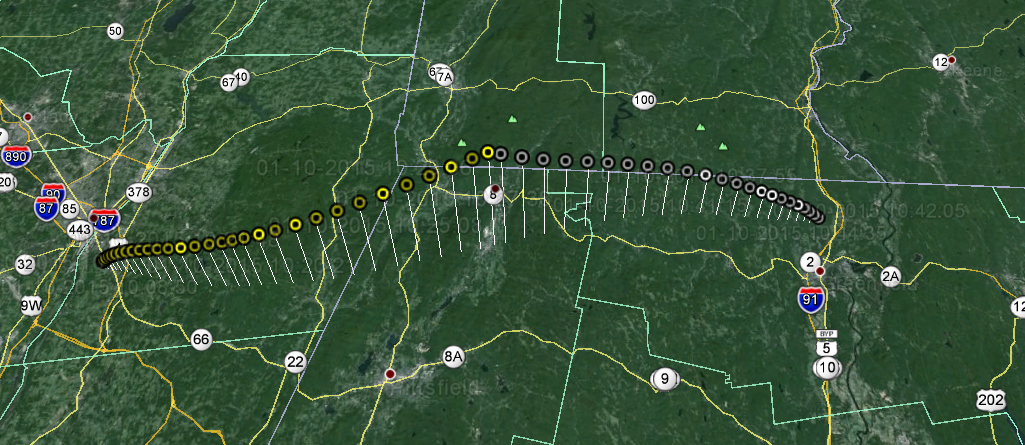
Conclusions:

Overall, EFT-2 was a giant success, despite the fact that she is still 80 ft. up in a tree in Bernardston, MA. All primary objectives were accomplished, and the tree landing was not unexpected, as predicted by our top pre-flight risks.
On future flights, it will be expected that we will lose communications after takeoff, but that the FDR will record all the data for us to recover after, and that the TM phone will prove a reliable location technique once the payload is back on the ground.
Also, we wanted to give a shout-out to the awesome launch crew that helped us out: a huge thanks to Dave, Andrey and Brian for helping with the launch!

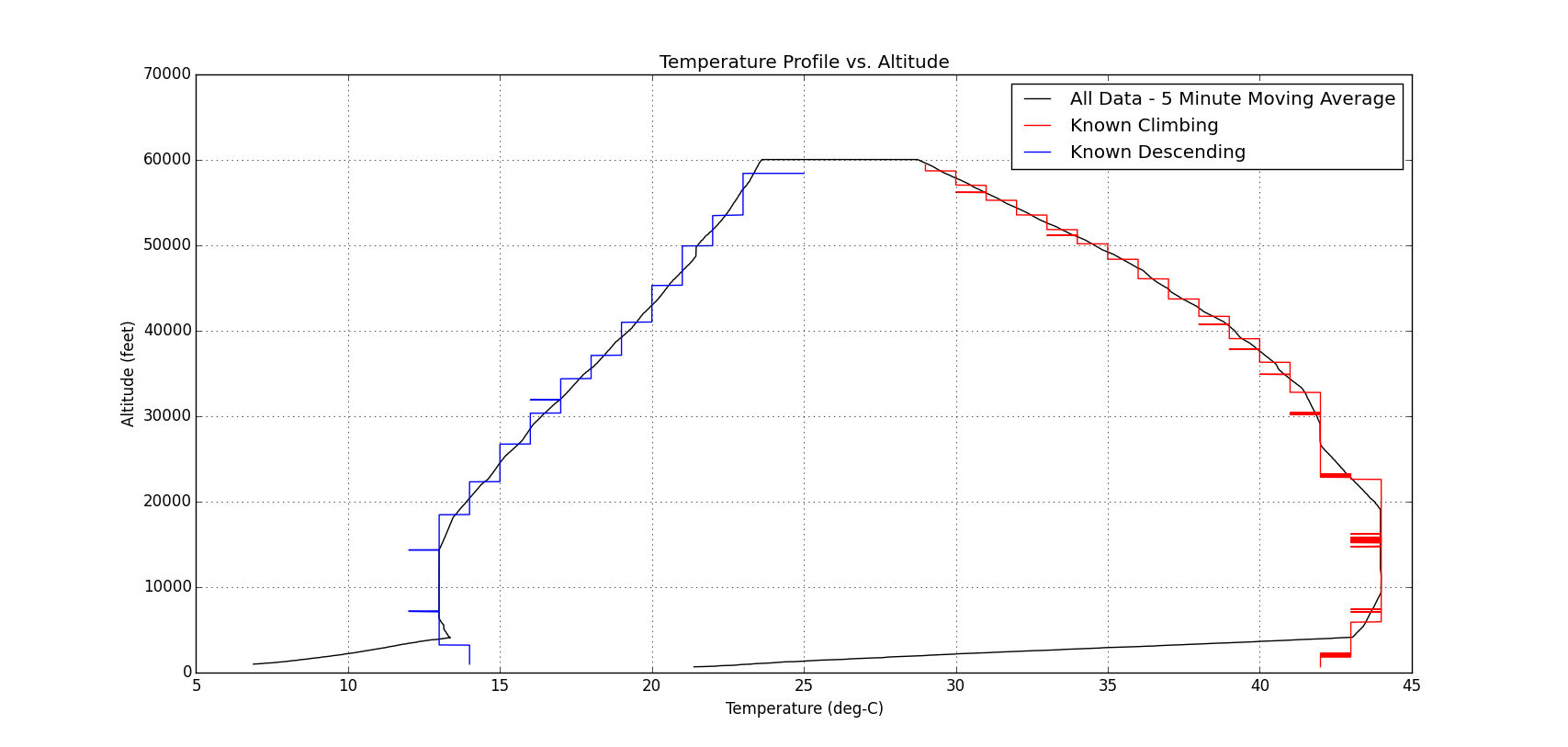







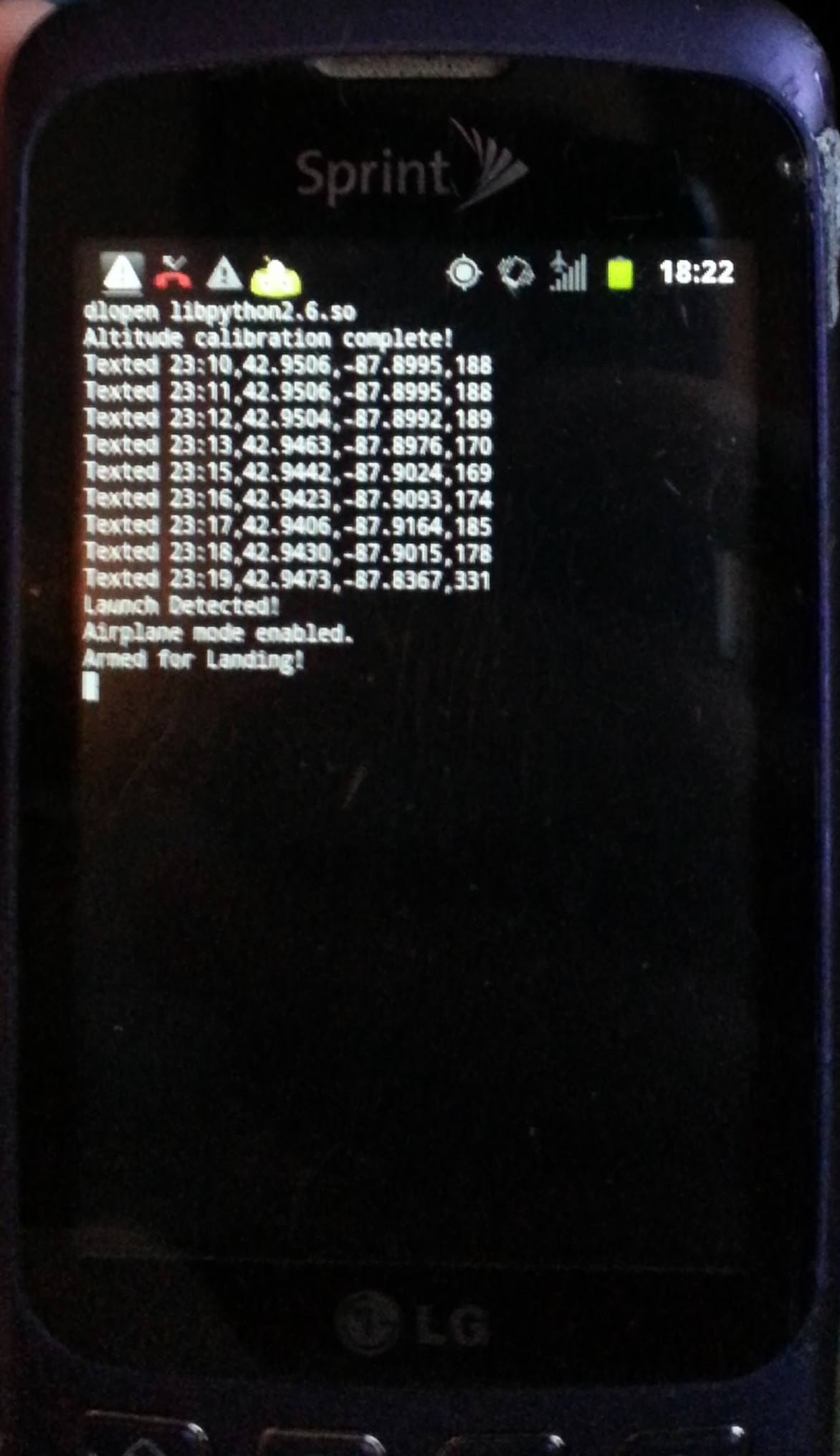


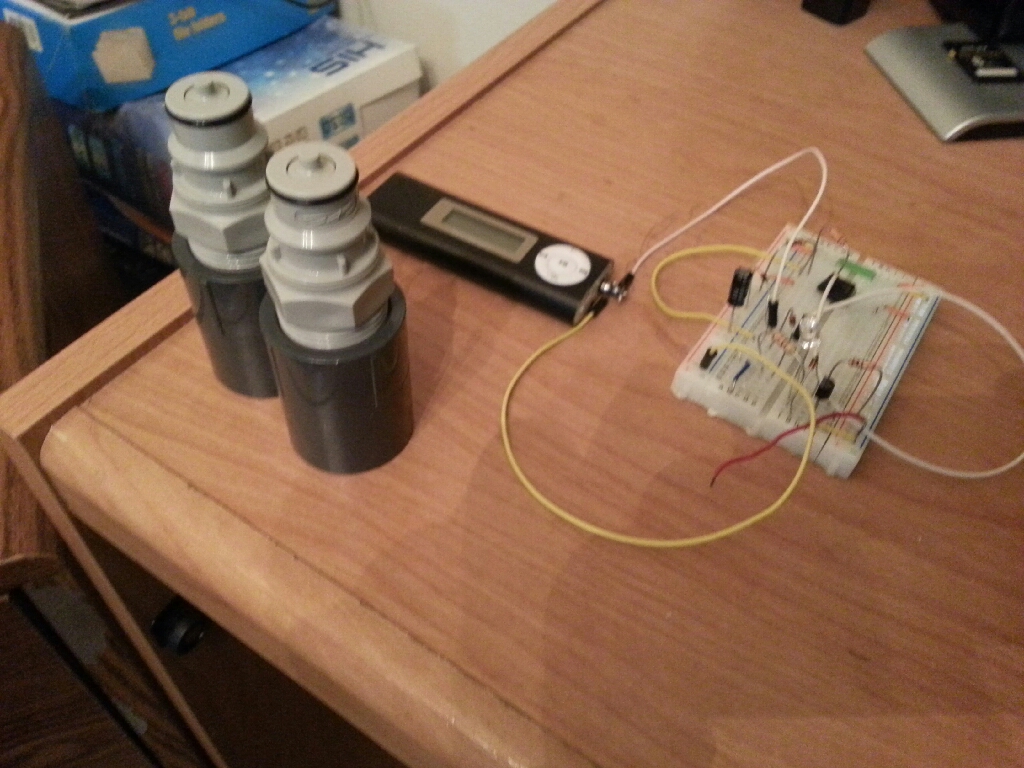
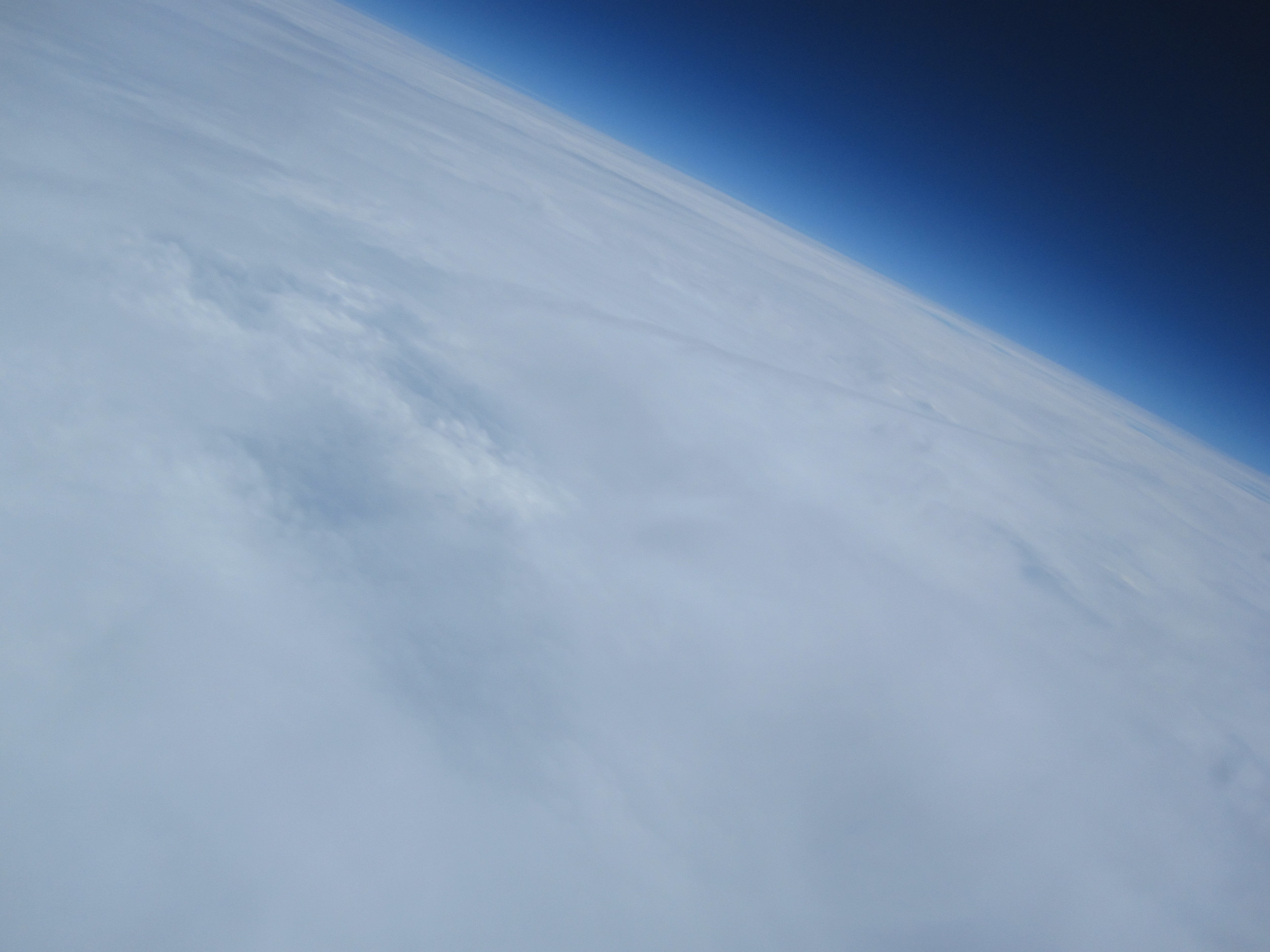


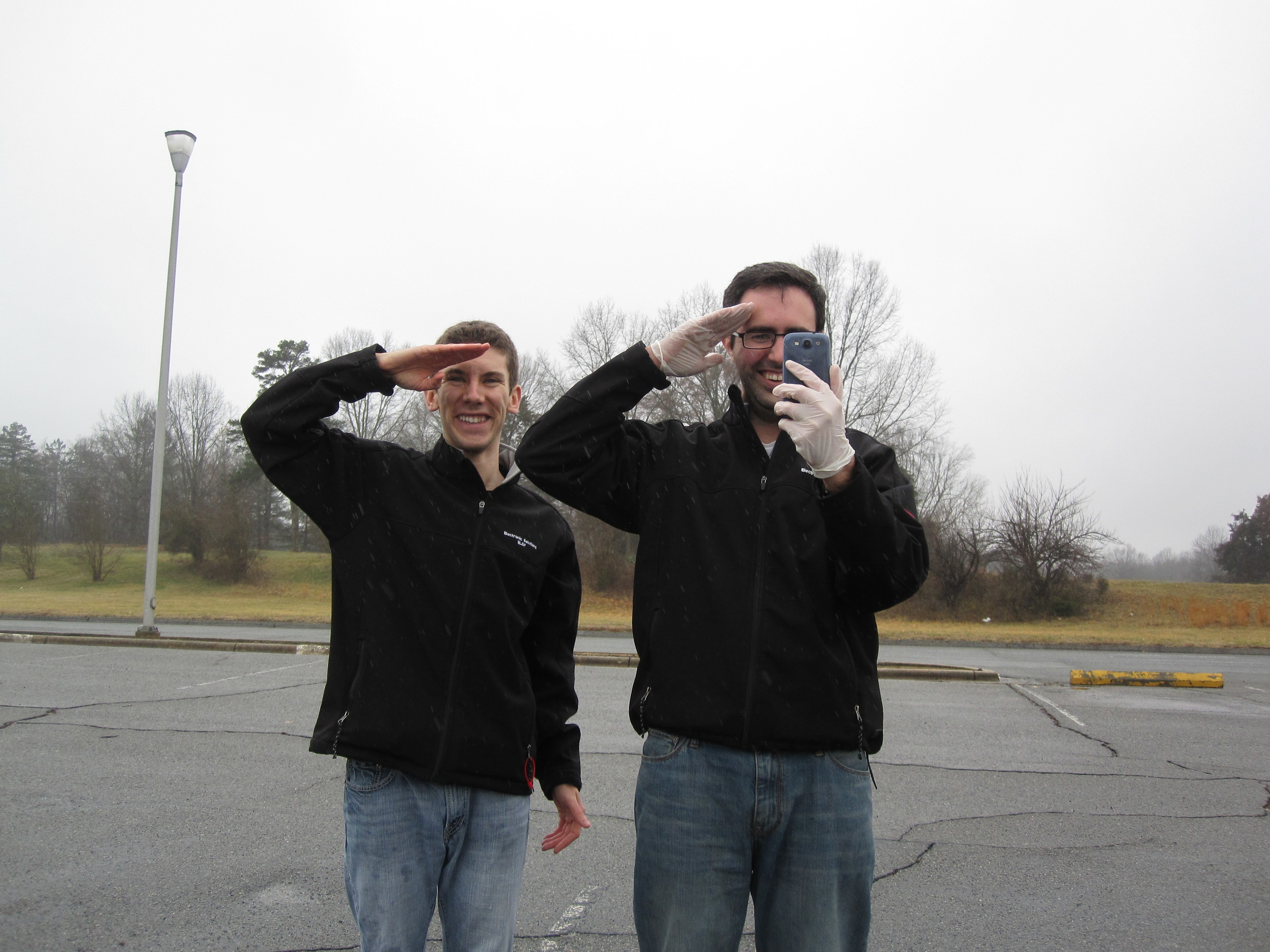

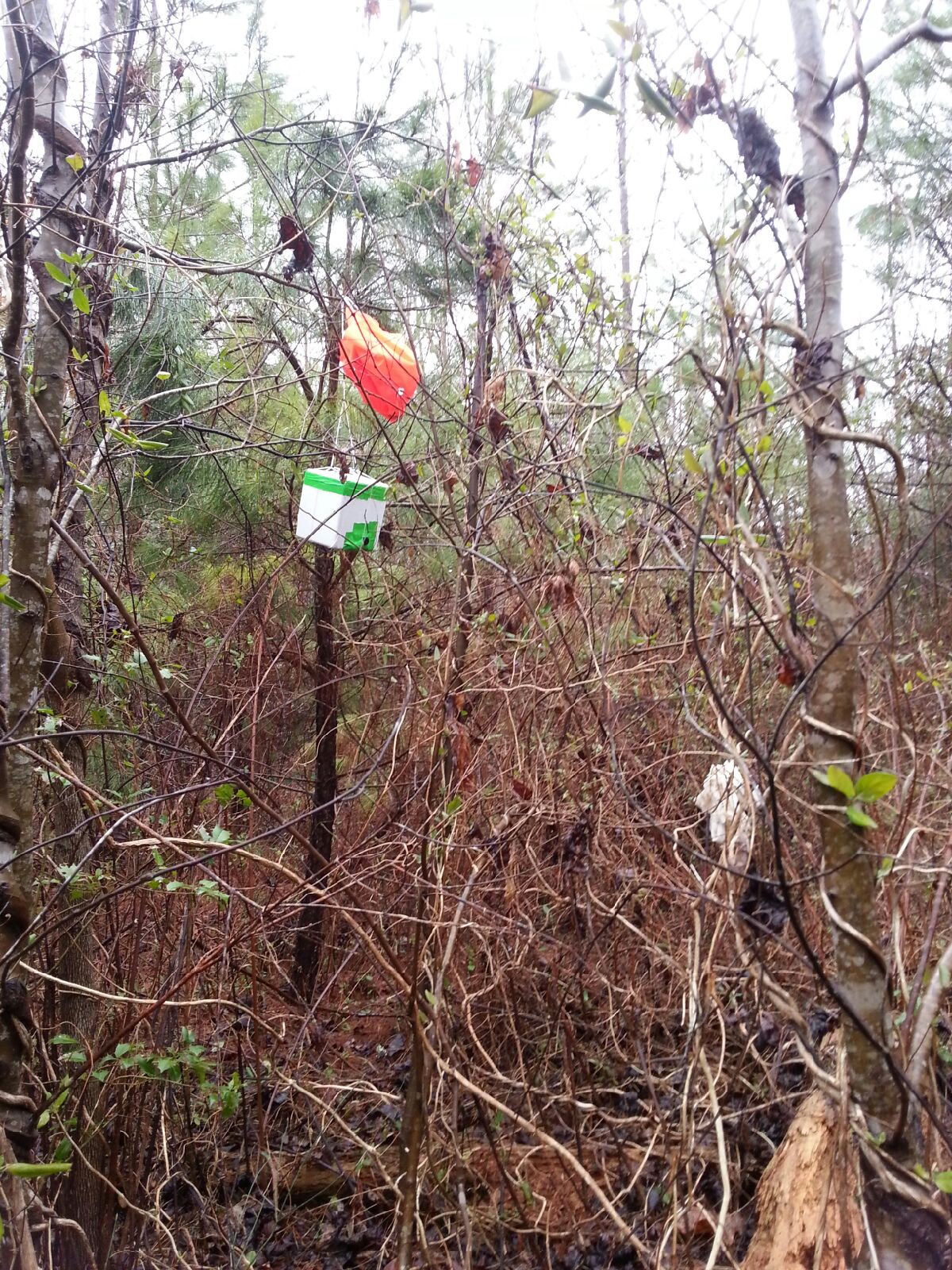 reading the posted signs that just forbid firearms and hunting on the land without a permit, we proceed to walk the mile or so towards EFT-3. SMS messages are still coming in loud and clear.
reading the posted signs that just forbid firearms and hunting on the land without a permit, we proceed to walk the mile or so towards EFT-3. SMS messages are still coming in loud and clear.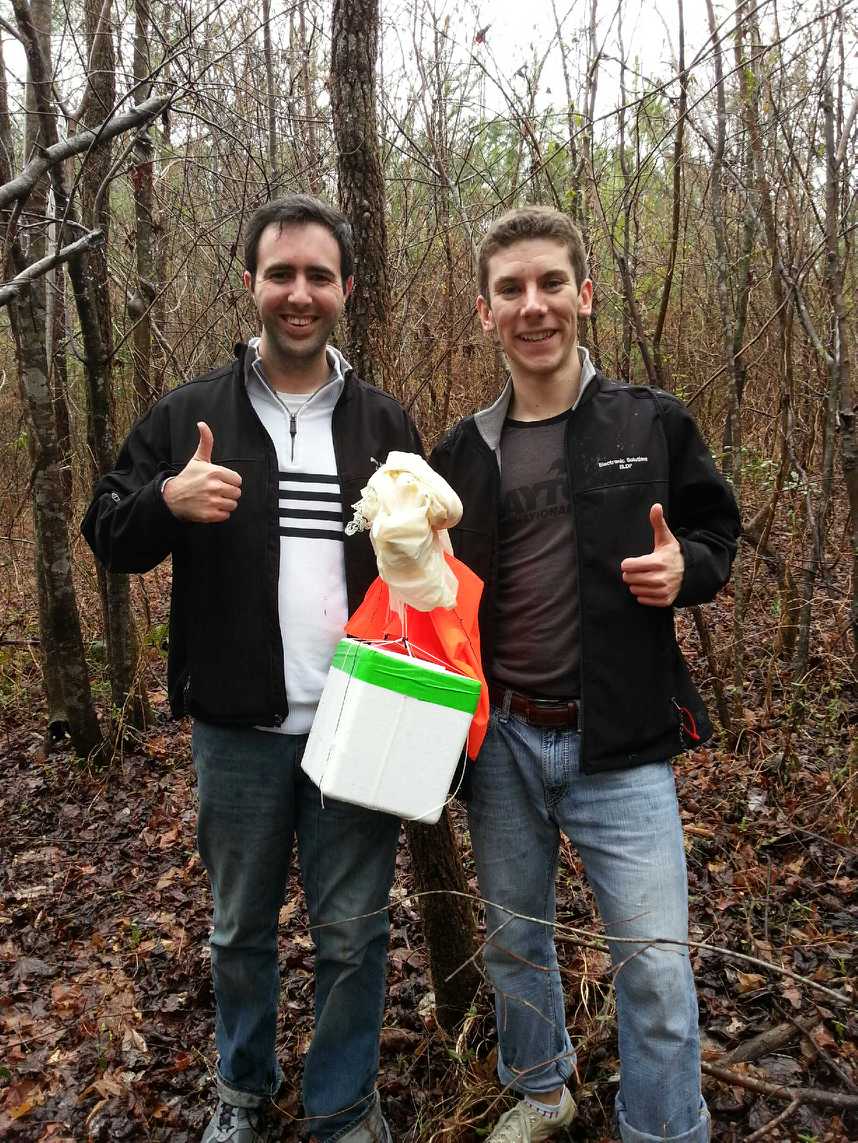

 the balloon to parachute attachment line had wound itself around the parachute
suspension lines about half way up, which
effectively reduces the line length and hence reduces the drag coefficient of the parachute. For future launches, a longer balloon to parachute attachment line should help increase stability, and hence make it more stable on ascent. Furthermore, a parachute deployment mechanism (potentially utilizing the cut-down device hardware) that waits until a prescribed altitude before deploying the parachute would decrease the changes of any lines tangling and reduces the distance and time that would be required for recovery.
the balloon to parachute attachment line had wound itself around the parachute
suspension lines about half way up, which
effectively reduces the line length and hence reduces the drag coefficient of the parachute. For future launches, a longer balloon to parachute attachment line should help increase stability, and hence make it more stable on ascent. Furthermore, a parachute deployment mechanism (potentially utilizing the cut-down device hardware) that waits until a prescribed altitude before deploying the parachute would decrease the changes of any lines tangling and reduces the distance and time that would be required for recovery.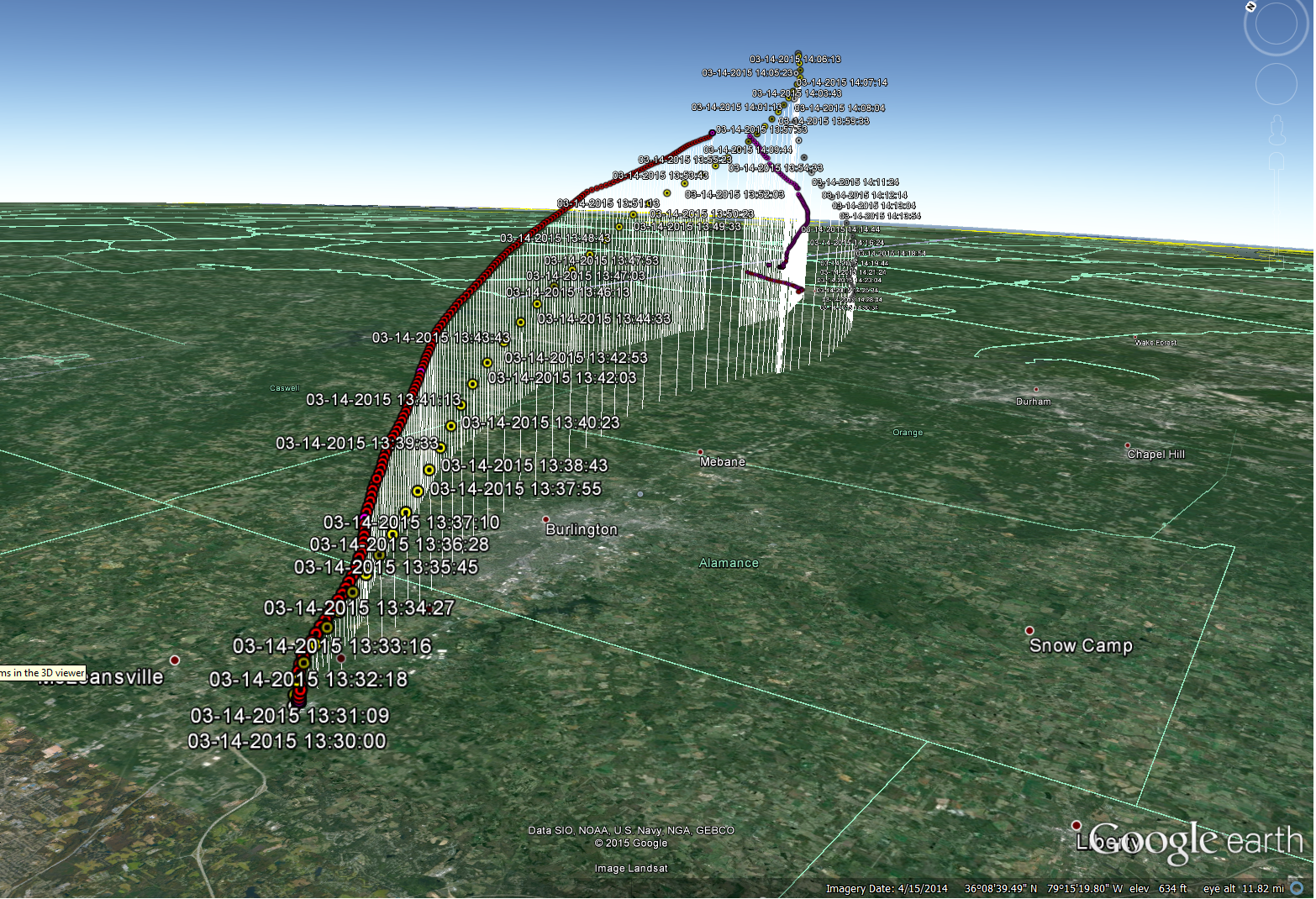
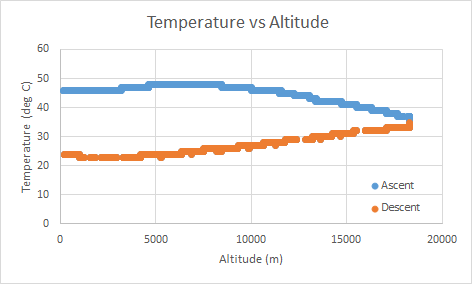




 After final pre-flight checks the night before (OK, maybe it was 2AM the morning of...), the launch-site selected was at a school just south of Albany, NY, ensuring that we were outside of controlled airspace and not in line with any of Albany’s runways.
After final pre-flight checks the night before (OK, maybe it was 2AM the morning of...), the launch-site selected was at a school just south of Albany, NY, ensuring that we were outside of controlled airspace and not in line with any of Albany’s runways.


